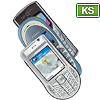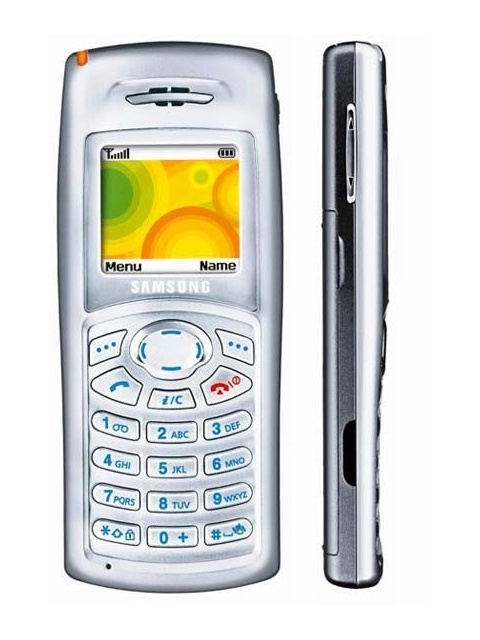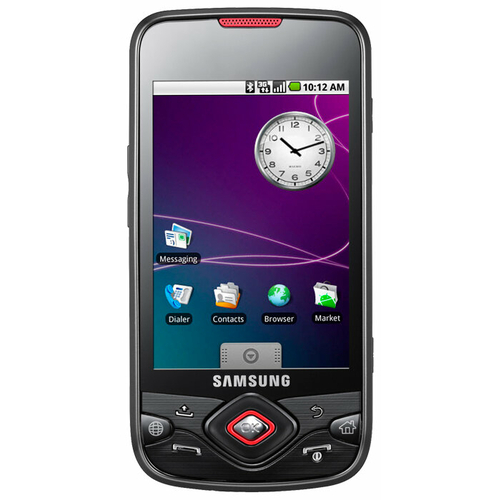The first part of the story about my first phones in some way caused a warm reaction from readers, so I decided to think a little and remember five more devices that I think about with special warmth and nostalgia. So make yourself comfortable in our time machine and let's go.
And if you haven't read the first part, then welcome to the link:
 5 phones that were my first
5 phones that were my first
Samsung C100 – first with voice ringtones
Remember the days when polyphonic ringtones in phones were divided into two categories: with or without voice? At that time it was too early to think about playing mp3, since the drives in phones rarely exceeded the volume of several megabytes, and only the most expensive devices had support for memory cards.
So, in those days, the top-end devices were considered models from Samsung, which supported ringtones in the MMF format. They sounded loud, loud, and one of the polyphonic tracks could be the words of a song. It was precisely because of these magical ringtones that in the summer of 2004 I went to buy a Samsung C100.

In addition to the cool sound, the C100 had a smart display for its time – a resolution of 128 × 128 pixels and support for as many as 65,536 colors. Compared to competitors from Siemens or Nokia, which had only 4096 colors, this display looked much more interesting.
And Samsung C100 could connect to a computer via a cable (or infrared port) and be used as a GPRS modem. I won't say that the speed was high, but it was definitely ahead of my then Dial-Up. I don't remember exactly, but 4 rubles per megabyte of GPRS then seemed to look more acceptable than 30 rubles for 1 hour with a Dial-Up connection.

And the main thing is that the cost of the Samsung C100 is not so expensive – something about 4,000 rubles, or $ 133. The middle segment, so to speak.
 Review of GSM-handset Samsung C100
Review of GSM-handset Samsung C100
Siemens ST55 – the first with a camera
Siemens ST55 has become one of the strangest phones I've owned. It was bought quite by accident – I just turned up at a good price, and besides, with a camera, which in the same 2004 remained an outlandish thing. Without specifying the nuances before buying, I faced the strangest device of the era of independent Siemens Mobile (before BenQ came).

As it turned out, the Siemens ST line was created under an ODM contract by the Taiwanese company Quanta and inside was more like not Siemens, but some kind of Panasonic. That is, there were only menu icons from the popular models of the German manufacturer. Despite the fact that the device had, in comparison with other “Germans”, a better display, a speaker and a camera of as much as 0.3 MP, I did not like it at all in use.

Firstly, it was impossible to save the ringtone through the built-in browser. The tunes played, but there was no save option. Secondly, the ST55 had some crazy vibrating alert, which was almost louder than the standard ringing tones. Thirdly, he did not want to work with Siemens software for synchronization with a PC. And fourth, it didn't have Java support. Considering that the capabilities of any classic Siemens could be significantly expanded using Java applets, this was sorely lacking in the ST55.

As a result, I could not use the phone. I did not leave the feeling that in front of me was a Chinese counterfeit, and not the original Siemens model. And that was a few years before the first iPhone appeared with two SIM cards and a TV antenna.
 Review of GSM-handset Siemens ST55
Review of GSM-handset Siemens ST55
Nokia E63 – first with QWERTY keyboard
In 2008, Nokia decided to create a relatively inexpensive device with a QWERTY keyboard. Firstly, to expand the potential audience beyond corporate buyers, and secondly, to interest those corporate clients who until now preferred inexpensive dialers. By that time, I was very interested in full-keyboard options, but I was not ready to buy a device for $ 500 or more. And then the Nokia E63 appears on sale – almost a complete copy of the E71, but in a plastic case, with a poorer set and at a price that is acceptable to me. I don't remember exactly what price it had, but it exactly matched the inexpensive smartphones that were popular with young people.

Yes, I just fell in love with this keyboard. It was a pleasure to type on it – I have never been able to type so quickly and with a minimum number of errors on any smartphone. Although the addiction was long and somewhat painful, it was especially difficult to master the location of the number keys and punctuation marks.

Another interesting feature of the Nokia E63 is the ability to activate the Wi-Fi hotspot, however, only with the help of third-party applications like JoikuSPot. For 2008 it was very unusual and useless for many, but at first for a PDA, and then for an iPod Touch, this opportunity was very useful.

The rest of the Nokia E63 was a typical Nokia smartphone of that time, and it was not possible to remember any other features of it.
 Review of GSM / UMTS-smartphone Nokia E63
Review of GSM / UMTS-smartphone Nokia E63
Samsung Galaxy Spica (i5700) – the first Android – smartphone
Smartphones based on Android arrived in Russia a little later than in European countries, and at first they were received rather coldly – Nokia and its Symbian were still very trusted. But since all my life I am happy to reach out to everything new, I bought the Samsung Galaxy Spica almost immediately after it hit the shelves. It was among the first PCT Android – smartphones and at the same time was much cheaper than competitors – HTC Hero and Samsung Galaxy (i7500). The Galaxy S series did not exist at that time.

Generally, Samsung released this model in reserve and just in case, assuming, but not being sure that Android will be successful. The device worked on the first mass version of the “green robot” – 1.5 Cupcake and after a while received an update to 2.2 Froyo. I remember how after updating to the beta version Android 2.2 I first encountered a third-party shell, then just a proprietary launcher, because of which the system began to slow down noticeably. At the same time, the first custom firmwares began to appear, where this launcher was “drank”.

Most of all, I remember Spica that finally, after several years with Windows Mobile on PDAs and Symbian on smartphones, it offered a new experience: the app store Android Market (it seems to have been called that) , a bunch of programs to the next level, completely built for finger control interface. And if Samsung at the time of launching Spica still doubted its success Android, then as a user I had no doubts.

The only thing that really annoyed me was that the display was not the most responsive. In the interface it was not so noticeable, but when entering text, erroneous presses and misses on the necessary buttons became a harsh reality. And at first there was a shortage of some familiar applications from the Symbian ecosystems and Windows, however, over time, everything that was needed appeared.
 Review of GSM-smartphone Samsung Galaxy Spica (i5700)
Review of GSM-smartphone Samsung Galaxy Spica (i5700)
Meizu MX2 – the first “Chinese”
Thanks to this, I learned about cool Chinese smartphones much earlier than most of my friends and acquaintances. And in 2012 I decided to buy my first “Chinese” – Meizu MX2. By the way, I switched to it after a year of using iPhone 4S and the next six months with Samsung Galaxy Note 2.

Downgrade? It wasn't like that. The MX2 was similar to the SGN2 in terms of characteristics, had a stunning HD IPS display, compact dimensions, an excellent camera and simply breathtaking sound. By the way, Meizu was one of the first to use displays without an air gap, which at that time looked like some kind of previously unknown magic.

The Flyme shell and the proprietary touch-sensitive LED circle under the display became a real breath of fresh air. It was very convenient to use and interact with the system using such an original control. Meizu MX2 has become as enjoyable for me in terms of interface, smoothness and control as iPhone, but with a full set of features Android.

Over time, I can safely say that it was the best Meizu in the entire history of the company and one of the best Android smartphones that I had. It is a pity that after the closure of the MX line of the company Meizu it was not possible to make any more devices ahead of their time.
 Meizu MX2. First glance
Meizu MX2. First glance  Smartphone review Meizu MX2
Smartphone review Meizu MX2  Operating experience Meizu MX2
Operating experience Meizu MX2
Conclusion
Now I'm interested to know from you which phone was the strangest, which one was the first on Android (if any), and which device was the first with a camera. Let's get nostalgic in the comments.
 5 phones that were my first
5 phones that were my first
